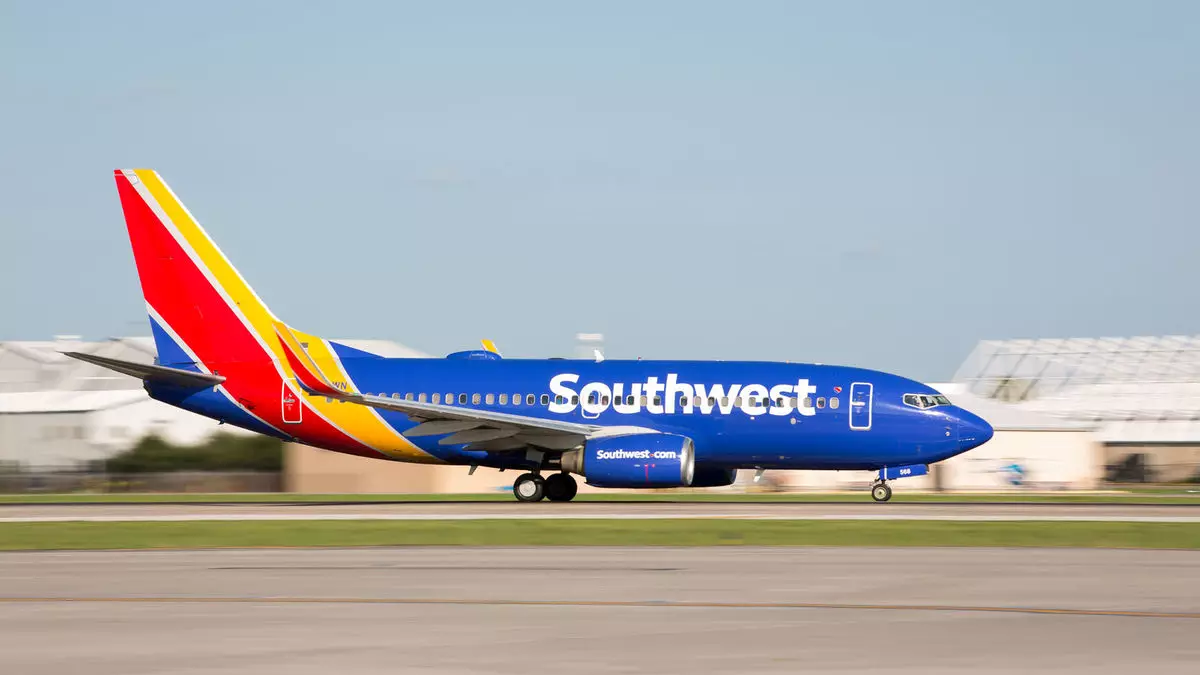Southwest Airlines has long been synonymous with a customer-first ethos, prominently featuring its two free checked bags policy, which served as both a selling point and a significant differentiator in the highly competitive airline industry. Starting May 28, however, the airline will introduce bag fees, signalling an unprecedented shift in its operational foundation. This fundamental change reflects not only a response to market pressures but also aligns Southwest more closely with its competitors, challenging the tradition that has historically defined the airline.
The recent comments from United Airlines CEO Scott Kirby, describing the move as “the slaying of a sacred cow,” encapsulate the magnitude of Southwest’s departure from its long-held policies. For years, the airline’s commitment to offering complimentary checked bags was a bedrock policy that generated customer loyalty and market share. This change raises the critical question: Is it worth sacrificing a well-loved tenet of their brand in pursuit of financial stability and growth?
Market Realities and Customer Preferences
The strategic reorientation appears to be informed by extensive in-house studies indicating that Southwest’s previous assertions regarding the benefits of free checked bags might not fully reflect current market dynamics. While executives maintained that this policy contributed positively to market share, the emerging experimentation with metasearch engines and online travel agencies (OTAs) revealed a stark reality—customers are primarily motivated by price.
As Southwest CEO Bob Jordan articulated, customers searching for flights on these platforms showed a marked sensitivity to fare differences, leading to the decision to introduce a basic economy fare. This move is not just about acquiring bargain flyers; it also designed to bolster the airline’s upselling capabilities. By aligning its offerings more closely with competitor pricing structures, Southwest aims to navigate the increasingly price-driven nature of travelers’ decisions.
Changes Beyond Bag Fees
Recent alterations to the airline’s policies extend beyond the introduction of bag fees. Another significant change includes the reinstatement of flight credit expirations, which can be perceived as a more stringent approach toward retaining customer revenue. Furthermore, the airline is lowering the accrual of loyalty points associated with its more economical fare classes, aiming to recalibrate how rewards are generated in line with shifting market demands.
Additionally, Southwest will adopt dynamic Rapid Rewards redemption rates, which will no longer directly correlate to cash fare prices. This divergence from their historic loyalty model exemplifies a broader transition to an adaptive pricing framework. Such steps signify that Southwest is not merely adopting features from other airlines but is also revamping its foundational strategies to remain competitive.
Culture vs. Strategy: The Balancing Act
As Southwest Airlines embarks on this transformative journey, industry experts have voiced concerns regarding the potential alienation of its customer base, particularly those who strongly identified with the airline’s no-bag-fee mantra. Delta’s Glen Hauenstein suggested that the changes may put at risk the loyalty of a substantial segment of Southwest’s clientele.
Consultant Brad Beakley provided further insight, cautioning that while necessary changes can be made, the intrinsic culture that has characterized Southwest must remain intact. The company’s ethos—the “soul” that drives its operations—needs to be preserved even amidst a landscape of financial adjustments. If customers and employees sense a disconnect from the once-vibrant culture, the airline may encounter considerable challenges in executing its new strategies effectively.
Financial Impact and Future Projections
Southwest anticipates that these bold initiatives could drive an impressive $1.8 billion boost in earnings before interest and taxes over the next year, of which bag fees could contribute an estimated $800 million. While the revenue potential is undoubtedly appealing, this financial windfall must be balanced with the risks of customer disenchantment and brand dilution.
The introduction of reserved seating and extra-legroom paid options slated for next year reflects an important shift toward diversified product offerings—a move to capitalize on consumer preferences for enhanced service levels while also generating additional revenue. This strategy, viewed through the lens of an omni-platform merchandising approach, enables Southwest to tap into a broader customer base, but it does require a delicate navigation to avoid compromising its foundational values.
The upending of long-standing policies can often lead to anxiety within an organization. However, if Southwest successfully adapts its model while simultaneously preserving the elements that made it a beloved choice among travelers, it could very well emerge stronger, albeit transformed, in a rapidly evolving aviation landscape.


Leave a Reply